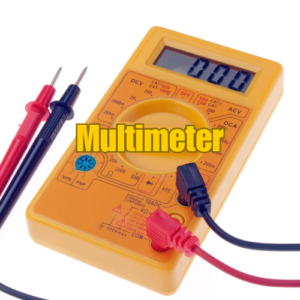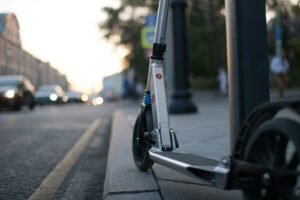How to Fix an Electric Scooter: Common Problems and Solutions
Although it would be unfair to say electric scooters are high maintenance, learning how to fix an electric scooter will save you time, money and trouble in the long run. There’s no getting past the fact that prompt troubleshooting and regular maintenance are key to keeping your scooter in top condition.
In this article we will look at some common problems you might have with your electric scooter and how to go about fixing them.
Troubleshooting Common Problems with Electric Scooter Motors
When your scooter won’t start or runs slowly there’s a good chance that there is a problem with the motor. Electric scooters use 4 main types of motors, usually hub motors or electric motors, and these are integrated into the rear or front wheel. Some scooters have a dual motor set up with one in the front and one in the rear, but most scooters have one motor.
Knowing what your motor type is can help with troubleshooting, diagnosing problems and general maintenance. You should consult your electric scooter manual or specifications to help you with this.
Here are the 4 main types of motors:
- Brushed motors – this type of motor is tough and reliable and handles pressure well, however it is less efficient than other electric scooter motors. It also has more moving parts than a brushless motor
- Brushless motors – a brushless motor is more efficient than a brushed one and it has fewer moving parts (which means there are fewer parts that need to be maintained) but it is more fragile than a brushed motor overall
- Geared hub motors – these are motors that are less powerful than gearless or brushed motors because they are smaller, but this also makes them lighter and they retain their charge better, making for a longer range
- Gearless hub motors – this type of motor is larger, heavier and more powerful than a geared hub motor. It is also more efficient than a brushed motor or gearless hub motor
How to Troubleshoot Common Motor Problems
In order to diagnose any potential problem with your electric scooter’s motor, you can follow the steps below.
Step 1 – Check your manual to see where the motor is located (front or rear of the scooter)
Step 2 – Open up the scooter’s deck by taking the screws out
Step 3 – Examine the motor by sight and smell. Check for any disconnected or loose wires by gently pulling them to see if they have become loose or disconnected, and look for burnt or melted wires. If any of the wires or components have a burnt smell then you may have to replace the motor as it could have sustained damage from a short circuit. If you can see a blown fuse then you can replace it also
If you can’t find anything wrong with the motor by sight or smell, it is likely that your problem is not with the motor, it is elsewhere.

Charger and Battery Issues
Another common explanation for problems with your electric scooter is the battery or the charger itself. If you need to replace the charger it will be fairly cheap, but the battery is a bit more expensive to buy.
Follow the steps below to troubleshoot the battery and charger.
Step 1 – Connect the charger to the port and check the battery indicator. If no light comes on and the scooter doesn’t begin to charge, you need to replace the charger
Step 2 – Test the battery by charging your scooter for the hours that are recommended in your manual. If the scooter doesn’t start after the charge time then the problem lies with the battery, and you will need to replace it. If you are able to test the charger and/or battery on another scooter then you can 100% make sure where the problem is
Power Switch Problems (or Key Switch on Some Scooters)
If your scooter isn’t turning on after charging, it may not be because of the charger or battery, it could be the power switch itself, or in the case of some scooters that are started with a key, the key switch.
The easiest way to check if there is something wrong with the switch is to try to turn it on and off a couple of times. If the switch feels a little loose then this could be the source of your problem. To make sure if the problem is your power switch, attach a multimeter and take a reading.
Use the DC volts function on the multimeter. If there is no current or too low a current then you will have found where the problem lies. Your manual should tell you the correct voltage.

Problems With the Scooter’s Throttle
Another common issue for electric scooters is the throttle not functioning properly. Just like the power switch we can attach a multimeter to check that the throttle is receiving the correct voltage.
As with the power switch fix, use the DC volts function. (as the name suggests a multimeter has various settings e.g. resistance and frequency as well as voltage)
A Blown Fuse (or Circuit Breaker)
Use your manual to find your electric scooter’s fuse location and check to see if the fuse has blown. If it has then you will need to replace it. If there is a short circuit the fuse will blow to prevent the rest of your scooter being damaged. If the fuse has blown there will be a gap in its wire and likely a metallic stain inside the glass.
Troubleshooting Steps For Common Scooter Issues
| Issue | Troubleshooting Steps |
|---|---|
| If the Motor Does Not Run | Make the power switch is on |
| Check the fuse to make sure it hasn’t blown | |
| Push the scooter to start (some scooters need this) | |
| Make sure the battery is fully charged | |
| Inspect the motor for damage by sight, touch, and smell | |
| Test the power switch (or key switch) and throttle with a multimeter to ensure power flow | |
| Test the battery charger and port with a multimeter | |
| Check the voltage battery pack with a multimeter in case the battery needs replaced | |
| If the Motor Runs but Scooter Does Not Move | Inspect the power transmission system closely |
| Ensure the chain or belt is properly installed and working as it should | |
| Speed Controller Does Not Work | Ensure the power switch is on and working properly |
| Check the fuse or circuit breaker in case it has blown | |
| Push the scooter to start (some scooters won’t start unless moving) | |
| Inspect the speed controller itself as well as other connected components | |
| Test the motor, speed controller, and the throttle are all working properly | |
| If the Belt Falls Off the Rear Wheel or Motor | Check the size of the drive belt |
| Change the belt if needed | |
| Check the old belt for the correct numbers and letters to help find a replacement | |
| If the Key is Lost | Replace the key switch or get a new key |
| Batteries Lose Power Too Quickly | Charge the battery pack for the full charging time (usually around 8 hours) |
| Test the both the battery charger and port to see if they are working properly | |
| Test the battery pack on a different scooter if possible | |
| Check the battery pack is at the correct voltage with a multimeter | |
| If the Fuse or Circuit Keeps Blowing Out | Check the electrical components of the scooter to see if they are overloading |
| Inspect the fuse or circuit by sight, touch, and smell – if it has blown it will have a small gap in the wire and look for a metallic stain inside the glass | |
| If the Brakes Do Not Function Properly | Inspect the brake pads or shoes if they are too worn replace them |
| Adjust the brake cable tension (if applicable to your scooter) | |
| Maintain the braking system generally by cleaning them to avoid issues | |
| If the Motor Runs Constantly | The problem is most likely the speed controller, replace it if necessary |
| Test the throttle and speed controller to make sure they are functioning properly | |
| Replace the speed controller if needs be | |
| If the Battery Does Not Take Charge | Inspect the battery by sight, touch, and smell checking for damage |
| Charge the battery pack for 8-10 hours to make sure it isn’t depleted | |
| Test the battery pack on another scooter if possible | |
| Check the battery pack voltage with a multimeter | |
| If the Chain Falls Off Rear Wheel or Motor | Inspect the chain and make sure the sprockets are aligned |
| Replace the chain if you need to | |
| If the Motor Runs Slowly | Charge the battery pack for 8-10 hours to make sure it isn’t just a depleted battery |
| Inspect by sight, touch, and smell looking for any damage to the motor | |
| Test the battery charger and port to make sure that neither is defective | |
| Check the battery pack voltage with a multimeter | |
| Inspect the speed controller to make sure sure it isn’t defective, replace if necessary |
Conclusion
By following these troubleshooting steps, you should be able to diagnose most of the common problems and replace defective parts. If after close inspection and running through these steps you have found that you still don’t know what the problem is then you may have to take it to an expert at a scooter repair centre nearby.
If your scooter is still under warranty you will need to take it to a scooter repair place that is approved by your brand of scooter to maintain the conditions of your warranty.
Fixing any problems in a timely manner will ensure that your scooter lasts as long as possible and keeps you riding happily.
FAQ’s
Is There a Reset Button on an Electric Scooter?
The majority of electric scooters have a reset button and it will restore your scooter to its original Factory Settings. If you can’t find the reset button (it is usually found somewhere on the deck or handlebars of the scooter) check the scooter’s manual to help. Resetting your electric scooter can help to fix some common troubleshooting issues such as slow acceleration or some error codes.
How to Fix a Scooter not Starting?
If your scooter isn’t starting, the most common reasons for this are the battery being depleted and needed charged for around 8 hours, a dead battery pack that needs replaced, a fault with the motor itself or a faulty power switch that needs replaced (or one not powered on properly). It’s also possible that the fuse has blown and needs replacing.
It’s also worth realising that some brands of scooters need to be moving to start up (i.e. you need to push them with your foot manually to start them up). For more advice to help you diagnose the problem read the article above.

